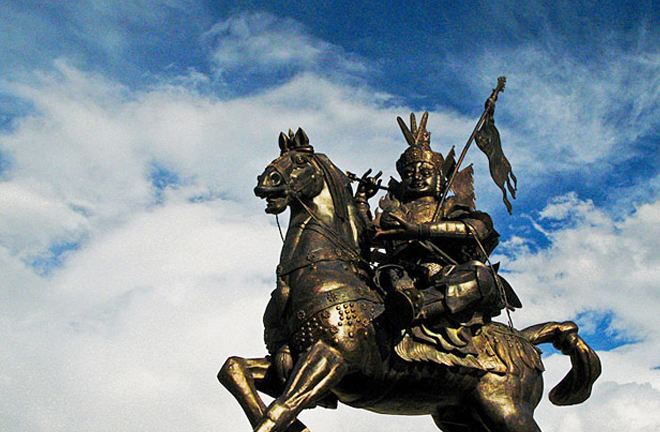Gesar studies must go beyond text: scholar

Studies of the Epic of King Gesar, one of the world's longest narrative epics, should focus on tradition in addition to textual analysis, said Norbu Wangdan, director of the National Gesar Studies Office.
Wangdan, who is also a research fellow from the Division of Tibetan Ethnic Literature at the Institute of Ethnic Literature (IEL) at the Chinese Academy of Social Sciences, made the remarks at a mid-term planning conference for “Oral Transmission and Performance of ‘Gesar’ of the Tu Ethnic Group: One of the First National Intangible Cultural Heritage Projects.”
The Epic of King Gesar, with more than 120 volumes and 1 million lines, is believed to be the world’s longest narrative epic. It is regarded as an encyclopedia of Tibetan ancient society, recounting the heroic deeds of King Gesar who ruled the legendary Kingdom of Ling.
Held from April 11 to 12 at Northwest University for Nationalities (NUN), the conference addressed progress in the organization, protection and research of Gesar studies. Experts held in-depth discussion on the inheritance and protection of Gesar as an intangible cultural heritage, building of Gesar studies as a discipline and talent cultivation.
Yang Enhong, a research fellow from IEL, expressed her concern over the disappearing oral tradition of Gesar, urging efforts to improve the preservation of original materials, digitalization of oral Gesar texts and cultivation of Gesar experts.
Wang Guoming, a professor at NUN, noted that the Gesar epic is a content-rich encyclopedia entailing interdisciplinary research and joint efforts. In regards to the preservation of ethnic and folk culture, he called for conscious and purposeful academic guidance.
The Gesar epic is beyond the research scopes of literature and folklore, according to Wangdan, who said that it is a carrier of native culture, indigenous knowledge, folk religious belief and ethnic memory, as well as a source of ethnic art creation.
“The protection of ethnic and folk culture is an ongoing task. Emphasis should be placed on formulating scientific and reasonable protection plans, adjusting protection measures to natural and cultural conditions of ethnic regions and adopting comprehensive preservation methods that coordinate local non-centralized and centralized protection efforts,” he said.
Zhu Yi is a reporter at the Chinese Social Sciences Today.
